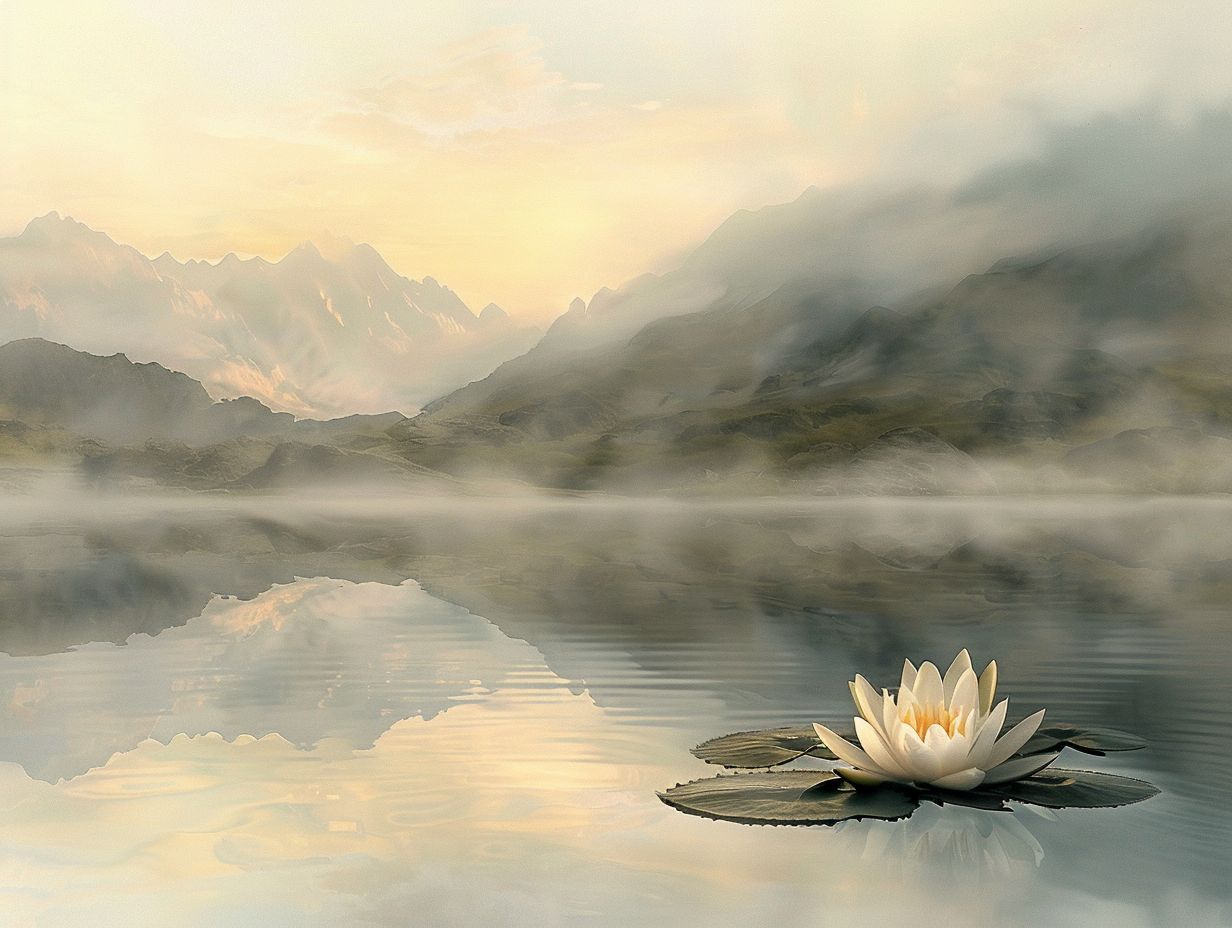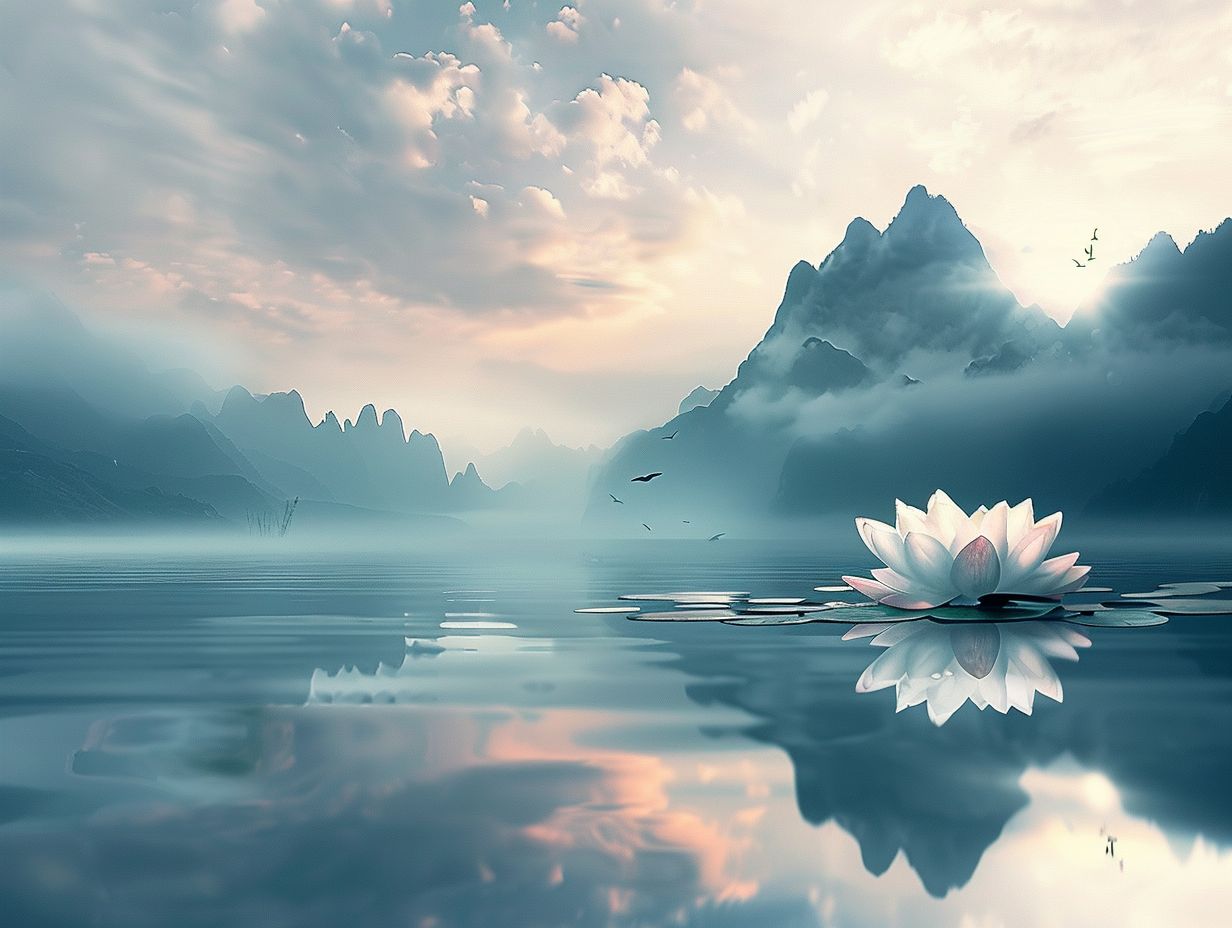The Relationship Between Brahman and Maya
In Hindu philosophy, the concepts of Brahman and Maya are of profound significance, intricately shaping the understanding of reality and existence. Brahman epitomizes the ultimate, unchanging reality, while Maya encapsulates the illusion or transient nature of the material world.
This discourse delves into the intricate relationship between these two concepts, exploring various interpretations and their implications for attaining Moksha, or liberation. Through an understanding of how Maya influences perception of Brahman, individuals can uncover deeper insights into their spiritual journey and the fundamental nature of the universe.
What is Brahman?

Brahman stands as a cornerstone in Hinduism, epitomizing the ultimate reality and the source of all existence, while transcending the confines of time and space. Within the framework of Vedanta philosophy, Brahman encapsulates the non-dualistic essence of existence, where the boundaries separating the self and the universe dissolve, unveiling a unified cosmic consciousness.
This divine essence forms the bedrock of spiritual teachings and serves as the focal point of philosophical inquiries into the nature of existence and reality.
Grasping the concept of Brahman is essential for understanding the interconnectedness of all beings, as it directly correlates with the notion of Atman, or the individual self. In the realization that Atman and Brahman are fundamentally one, seekers embark on a transformative journey toward enlightenment a state in which ignorance is cast aside, revealing the true nature of existence.
This path not only highlights the metaphysical dimensions of reality but also encourages profound contemplation on consciousness and existence, inviting individuals to transcend duality and experience the inherent oneness that pervades the universe.
Such comprehension enriches one s spiritual philosophy, guiding practitioners toward a deep sense of inner peace and harmony.
What is Maya?
Maya is a foundational concept in Hindu philosophy, often characterized as the illusion that obscures the true nature of reality, leading individuals to experience a fragmented existence rather than recognizing the inherent unity of Brahman. This profound illusion manifests in various forms, shaping perceptions of self, duality, and the ephemeral nature of the material world. Through rigorous metaphysical inquiry and dedicated spiritual practices, one can begin to unravel the complexities of Maya, journeying toward a deeper comprehension of reality and consciousness.
To truly grasp the significance of this illusion, one must delve into how perception influences experiences, frequently blurring the interconnectedness that underlies all existence. The intricate layers of Maya can distort judgments, prompting individuals to cling to fleeting pleasures and identities instead of acknowledging the eternal essence that permeates everything.
Spiritual awakening requires piercing through this veil, cultivating a heightened awareness of oneness and the divine. As seekers immerse themselves in contemplative practices, they embark on a transformative journey to transcend dualistic thinking, ultimately illuminating the path toward enlightenment and uncovering the profound truths concealed by the alluring nature of illusion.
The Concept of Brahman and Maya in Hinduism
In Hinduism, the concepts of Brahman and Maya are intricately intertwined, establishing a profound foundation for its metaphysical and spiritual framework. Brahman embodies the ultimate truth an absolute reality transcending all dualistic perceptions while Maya functions as the illusory force that engenders the perception of duality within the material realm.
This relationship artfully illustrates the dynamic tension between illusion and reality, compelling seekers on their spiritual journeys to discern the essence of existence and attain self-realization.
What are the Different Interpretations of Brahman and Maya in Hinduism?
The interpretations of Brahman and Maya within Hinduism present a striking diversity across various philosophical schools and sacred texts, weaving a rich tapestry of thought that characterizes this profound tradition. Some schools emphasize non-dualism, positing that Brahman constitutes the sole reality while Maya serves merely as an illusory veil.
In contrast, other schools adopt a dualistic perspective, regarding the interplay between Brahman and Maya as essential to the cosmic order. These differing viewpoints invite deeper philosophical inquiry and encourage individuals to delve into existential questions concerning the nature of reality and perception.
In Advaita Vedanta, for instance, the concept that recognizing the oneness of Brahman and the illusory nature of Maya is crucial for liberation takes center stage, fundamentally influencing one’s relationship with the universe. Conversely, Dvaita Vedanta asserts a clear separation, where individual souls remain eternally distinct from Brahman. This viewpoint ascribes a significant role to Maya in the creation of diverse experiences and consciousness.
These interpretations not only embody varied philosophical positions but also engage deeply with revered texts such as the Upanishads and the Bhagavad Gita, prompting seekers to reflect upon their own existence and the enigmatic nature of the world surrounding them.
The Relationship Between Brahman and Maya

The relationship between Brahman and Maya holds profound significance within Hindu philosophy, where Brahman represents the ultimate reality and Maya encapsulates the illusion that veils this truth. This dynamic interplay is essential for comprehending the nature of existence, as it demonstrates how the illusions of individuality and duality can divert one s attention from the recognition of their true essence, which is inherently interconnected with the cosmic unity.
Engaging with this relationship is a fundamental component of the spiritual journey toward enlightenment and liberation.
Is Maya an Illusion or a Manifestation of Brahman?
The inquiry into whether Maya is merely an illusion or a manifestation of Brahman represents a substantial philosophical debate within Hinduism, carrying profound implications for the understanding of reality. Some scholars contend that Maya is entirely illusory, obstructing awareness of Brahman, while others argue that it serves as an essential manifestation of Brahman’s creative play, often referred to as Lila. This nuanced perspective invites deeper metaphysical explorations concerning the nature of existence and the intricate relationship between illusion and reality.
Interpreting Maya exclusively as an illusion posits that the material world is a deceptive veil, obscuring the ultimate truth of Brahman, a viewpoint that resonates with classical Advaita Vedanta philosophies. In contrast, perceiving Maya as a manifestation encourages a more dynamic interaction with reality, suggesting that the divine essence permeates every facet of life. Philosophers such as Shankara and Ramanuja present markedly divergent interpretations, igniting discussions surrounding consciousness, subjectivity, and the ultimate purpose of existence.
Such discourse challenges individuals to reflect on their own experiences and raises critical inquiries about the nature of truth itself, questioning how closely it aligns with perception.
Can One Achieve Moksha by Understanding the Relationship Between Brahman and Maya?
Achieving Moksha, or liberation, is often perceived as intricately linked to one s comprehension of the relationship between Brahman and Maya. Knowledge serves as a beacon, dispelling illusion and unveiling ultimate reality. This understanding catalyzes a shift in consciousness, enabling individuals to transcend the limitations of duality and experience a profound interconnectedness with Brahman. Engaging deeply with these concepts becomes essential for spiritual awakening and the journey toward enlightenment.
To embark on this transformative journey, individuals must first acknowledge the pervasive nature of Maya, or illusion, which veils the truth of existence. By cultivating discernment through practices such as meditation, self-inquiry, and devotion, seekers can peel back the deceptive layers that obstruct their realization of true nature.
This process nurtures an unwavering conviction in the unity of all beings, significantly enhancing their spiritual development. As they navigate the labyrinth of ignorance and attachment, an increasing awareness of Brahman’s omnipresence gradually emerges, enableing them to dissolve personal limitations and embrace a higher state of consciousness.
Ultimately, this transformative understanding leads to a liberation that transcends mere escape from suffering; it represents a profound union with the divine essence of reality.
The Role of Maya in the Creation and Sustenance of the Universe
Maya occupies a pivotal position in the creation and sustenance of the universe, serving as the creative force that brings forth the material world while simultaneously shrouding the true nature of existence. This duality underscores the paradox of reality, wherein the illusion of separateness facilitates the dynamic interplay of creation and destruction within the cosmic order. Grasping the significance of Maya is essential for understanding the unfolding and evolution of existence within the framework of Hindu philosophy.
Through its intricate dance of illusion and reality, Maya cultivates a delicate balance between the tangible and the intangible, enabling life to thrive amidst an otherwise chaotic existence. This engagement with the cosmic order reveals how every element of creation is intricately woven with deeper truths, often concealed beneath layers of perception.
By looking into this relationship, one can appreciate how Maya shapes identity and consciousness, guiding beings through the cyclical journey of birth, death, and rebirth. Ultimately, the concept of Maya invites a recognition of the transient nature of life, encouraging profound introspection on existence that transcends mere appearances.
How Can One Overcome Maya and Achieve Liberation?

Overcoming Maya is crucial for attaining liberation, and a variety of spiritual practices can aid in this transformative journey toward self-realization and enlightenment.
Techniques such as meditation, self-inquiry, and the study of sacred texts serve as pathways to uncover the truth behind the illusion, allowing individuals to dissolve the ego and connect with the ultimate reality of Brahman.
This endeavor demands unwavering dedication and a profound willingness to engage deeply with one s own consciousness and perception.
What are Some Practices or Philosophies That Help in Overcoming Maya?
Numerous practices and philosophies can assist individuals in transcending Maya, thereby unveiling the profound truths of existence. Among the most transformative approaches are meditation and self-inquiry. These spiritual teachings invite individuals to delve into their inner selves, question the essence of reality, and nurture a heightened awareness of the present moment. This journey ultimately leads to a deeper comprehension of Brahman and the dissolution of illusion.
Plus meditation, yoga emerges as a formidable tool for navigating the distractions of the material world, enabling practitioners to harmonize their physical, mental, and spiritual energies. Engaging in yoga poses and breathwork cultivates a heightened sense of mindfulness, facilitating the detachment from the ephemeral nature of experiences. Furthermore, the study of the Upanishads reveals deeper philosophical insights, exposing profound truths about the inherent interconnectedness of all beings.
By incorporating these practices into daily life, individuals foster a sense of inner peace and clarity, illuminating the path toward spiritual awakening and liberation from the confines of illusion.
The Importance of Understanding the Relationship Between Brahman and Maya in Hinduism
Comprehending the relationship between Brahman and Maya holds immense significance in Hinduism, as it forms the foundation for an individual’s spiritual journey and pursuit of truth. This understanding enables practitioners to adeptly navigate the intricate nuances of existence, allowing them to discern between illusion and reality.
Ultimately, this discernment paves the way toward self-realization and liberation. The teachings that encompass these concepts offer profound insights into the nature of consciousness and the very essence of life itself.
How Does Understanding the Relationship Between Brahman and Maya Impact One’s Spiritual Journey?
The understanding of the relationship between Brahman and Maya profoundly influences an individual’s spiritual journey, shaping perceptions of self, existence, and the ultimate goal of life. This comprehension paves the way for self-realization as one learns to navigate the complexities of duality while embracing the non-dual nature of reality. Consequently, this awareness serves as a cornerstone for spiritual awakening and personal transformation.
As individuals delve deeper into this intricate relationship, they often undergo a significant shift in perspective that transforms their thoughts and actions. Recognizing the illusory nature of Maya encourages a detachment from transient worldly concerns, facilitating a clearer focus on the eternal essence of Brahman. This evolution nurtures a deeper connection with both the self and the universe, ushering in an expansive sense of love, compassion, and unity.
Through regular meditation and mindfulness practices, practitioners may discover that they are not merely cultivating inner peace but also unlocking profound spiritual insights. This journey toward enlightenment not only enhances personal growth but ultimately leads to a deeper understanding of one s place within the cosmos.
Frequently Asked Questions

What is the concept of Brahman in relation to Maya?
Brahman is a Hindu term that refers to the ultimate, eternal, and supreme reality. Maya, on the other hand, is the illusory power that creates the material world. The relationship between Brahman and Maya is often described as that of a creator and its creation.
How does Brahman relate to Maya in Hindu philosophy?
In Hindu philosophy, Brahman is seen as the one supreme being from which all things arise. Maya, as the illusion that creates the material world, is considered to be a manifestation of Brahman’s power. This relationship highlights the interconnectedness and oneness of all existence.
What is the role of Maya in the relationship with Brahman?
Maya is often described as a veil that covers our understanding of the true nature of reality, which is Brahman. It is through the power of Maya that we are able to experience the material world, but it also keeps us from realizing the ultimate truth.
How do the concepts of Brahman and Maya influence Hinduism?
The relationship between Brahman and Maya is a central concept in Hinduism and influences many aspects of the religion. It is believed that understanding this relationship is essential to achieving enlightenment and breaking free from the cycle of reincarnation.
Can Maya be overcome in the relationship with Brahman?
According to Hinduism, the ultimate goal of life is to break free from the illusion of Maya and realize the true nature of Brahman. This can be achieved through spiritual practices such as meditation, self-reflection, and devotion to Brahman.
Is there a hierarchy in the relationship between Brahman and Maya?
In Hinduism, Brahman is considered to be the ultimate reality and Maya is seen as a lower form of existence. However, both are essential for the functioning of the universe and are ultimately interconnected. So, while there is a hierarchical relationship, it is also one of unity and harmony.
